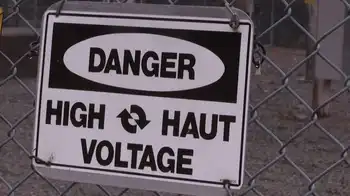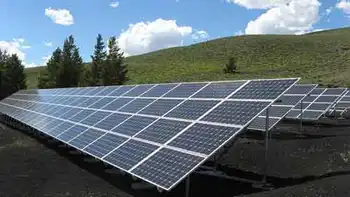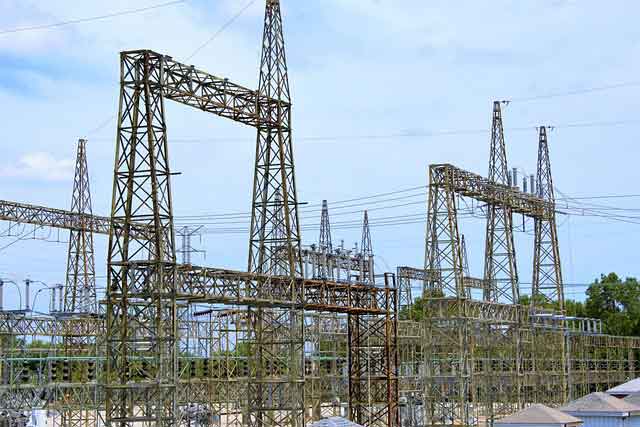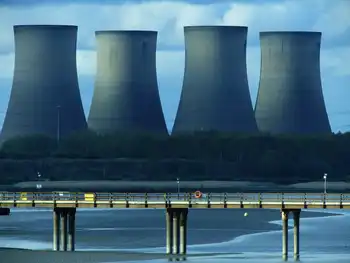Bruce nuclear unsafe, say workers
"The fact that this was a near-miss in human terms was mere luck," says a plant safety briefing into the May 12 incident obtained by the Star.
The impact shook the floor of the giant plant, says one worker.
"I could feel it 100 feet away," says the man, who asked not to be named. "It scared the hell out of us. You realize how close you came to death. Anyone standing underneath would have been dead, dead, dead.... Nobody has ever seen anything like this and I've been in the trade 20 years. It's a systemic failure, a complete breakdown of procedural barriers."
A second plant worker who was there at the time and spoke with the Star on the condition of anonymity said the load fell within 4.5 metres of some workers.
"The place is old. Things are falling apart. It does jeopardize safety at times. In a nuclear plant, it's a huge thing."
Any major safety breach in a nuclear plant adds to its seriousness, said Frank Greening, a former senior nuclear scientist with Ontario Power Generation.
"When it happens in a nuclear plant, it puts a different spin on it. It raises a lot of questions. If there's a rickety old crane in there, what else have they got? You expect a higher level of safety in a nuclear plant because you can't make mistakes. It's lucky that this didn't smash into something."
The incident has not been publicly reported before now.
Duncan Hawthorne, chief executive of Bruce Power, called it a "significant failure" but said no workers were in the vicinity of the fall and that the company has conducted a thorough investigation. He said the incident, though it happened in a nuclear plant, did not create any danger to the public.
"There was a manufacturing fault on one of the (crane) brakes," he said in an interview. "There were 17 other cranes with similar types of brakes so we kept them out of service until we could investigate."
He said a pending investigation report recommends a number of safety changes including replacing all the brake shoes in the 30-year-old cranes and increased crane inspections and training programs for crane operators.
Bruce Power is Canada's first private nuclear generating company, producing more than 20 per cent of Ontario's electricity. Located about 250 kilometres northwest of Toronto on Lake Huron, it is one of the largest private nuclear generating stations in the world. Bruce Power's 930-hectare site includes six reactor units.
The plant is currently working to get two more stations online. But the project won't be completed until the end of next year. The final bill is expected to ring in at between $3.1 billion and $3.4 billion – well above the original $2.75 billion budget, Hawthorne said.
David Mosey, a 30-year veteran of Canada's nuclear industry and author of Reactor Accidents, called the load fall a very serious incident.
"That's something people in health and safety will have nightmares about. It shouldn't happen if you've got an effective inspection process in place. Short of getting hurt, they don't come any bigger."
Documents obtained by the Star show the accident – and a second incident five days later – could have been avoided.
A day before the fall, a crane operator noted a problem with the equipment in a logbook. But the crane was never inspected or put out of service, according to internal reports obtained by the Star.
The logbook entry on May 11 says the hoist was "creeping down with 7,000 lbs. on it," says a safety briefing. "The hoist should have come out of service as soon as it was determined to be deficient in performance."
Putting the crane out of service would have triggered an internal brake inspection that would have "prevented this serious incident," the briefing says.
An inspection of the crane after the accident showed one of the two brake shoes was worn and "the lining had fallen out of the drum," it says. The opposite brake had "loosened to the point that engineering estimates it may have only had 20 per cent of its designed holding strength."
A follow-up document says "workers expressed concern" about a "lack of information and understanding in regards to the inspection" of the crane prior to being put back into service.
Five days later, on May 17, another load of about 454 kilograms carried by a separate Bruce Power crane began to "swing."
"You're in a tight spot and you've got load swinging, it could go banging into stuff," the second plant worker said.
An incident report says: "Upon review, it was discovered that this crane was not released for service" because of a "work request to repair the cable on the 1-ton aux hoist.... Crane not locked out or tagged to prevent use."
Bruce Power's Hawthorne dismissed the incident, saying an investigation found no mechanical issue with the crane.
Ministry of Labour officials say they received calls following both incidents.
"We left it, as is often standard procedure, to the workplace's internal responsibility system to pursue," said ministry spokesman Bruce Skeaff. "If there is no injury or fatality, there is no requirement in law for them to let us know."
That's not good enough, said one of the plant workers.
"We all thought the Ministry of Labour would come in and do an outside investigation. There should be third-party oversight."
Related News

ATCO Electric agrees to $31 million penalty following regulator's investigation
CALGARY - Regulated Alberta utility ATCO Electric has agreed to pay a $31 million administrative penalty after an Alberta Utilities Commission investigation found it deliberately overpaid a First Nation group for work on a new transmission line, and then failed to disclose the reasons for it when it applied to be reimbursed by ratepayers for the extra cost.
An agreed statement of facts contained in a settlement agreement between ATCO Electric Ltd. and the commission's enforcement staff says the company sole-sourced a contract in 2018 for work that was necessary for an electric transmission line to Jasper, Alta.
The company that won…





